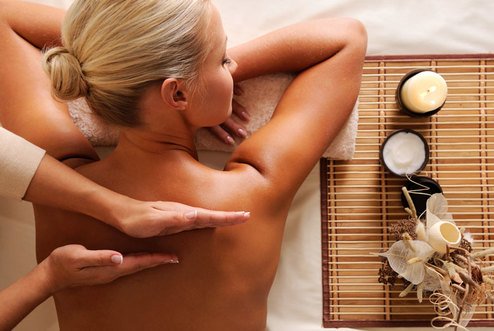
Therapeutic Massage
Aims to release the chronic patterns of tension in the body through slow strokes and deep finger pressure on the contracted areas, either following or going across the muscle fiber’s, tendons and fascia.
Deep tissue massage is used to release chronic muscle tension through slower strokes and more direct deep pressure or friction applied across the grain of the muscles, not with the grain.
Why get Deep Tissue Massage?
Deep tissue massage helps to break up and eliminate scar tissue. Deep tissue massage usually focuses on more specific areas and may cause some soreness during or right after the massage. However, if the massage is done correctly you should feel better within a day or two. It feels good and it is beneficial to your health. When muscles are stressed, they block oxygen and nutrients, leading to inflammation that builds up toxins in the muscle tissue. A deep-tissue massage helps loosen muscle tissues, release toxins from muscles and get blood and oxygen circulating properly. Because many toxins are released, it’s important to drink plenty of water after a deep-tissue session to help eliminate these toxins from the body.
Trigger Point Therapy
Trigger point therapy is a bodywork technique that involves an application of pressure to tender muscle tissue in order to relieve pain and dysfunction in other parts of the body. Sometimes massage and trigger point therapy are performed together.
Trigger points have several causes. Some common causes of trigger points are muscle trauma (injuries or falls), muscle strain (overuse), poor posture or emotional stress.
The purpose of trigger point therapy is to eliminate pain. After several treatments, the swelling and stiffness of neuromuscular pain is reduced, range of motion is increased, tension is relieved, and circulation, flexibility and coordination are improved.
What are Trigger Points?
Trigger points are areas of tenderness in a muscle. Your chronic pain may be caused by tender spots in muscles, tendons, and ligaments known as myofascial trigger points. Trigger points commonly called “muscle knots” cause local pain and stiffness, as well as create referral pain in other areas of your body.
There are two basic types of trigger points: active and latent. Active trigger points cause muscular pain and will refer pain and tenderness to another area of the body when pressure is applied. Latent trigger points only exhibit pain when compressed, they do not refer pain to other areas of the body. Latent trigger points are believed to be one of the causes of stiff joints and restricted range of motion of old age.
Trigger points may be associated with myofascial pain syndromes or fibromyalgia. Trigger points are very common and they are also referred to as muscle knots.
Trigger points differ from acupressure points. Acupressure points are concentrations of energy or blockages of the body’s energy pathways. Trigger points are physical phenomena that can be felt by touch.
The pain caused by trigger points may be the biggest cause of disability and loss of time in the workplace.
Myofascial Release
Myofascial Release is a very effective hands-on technique that provides sustained pressure into myofascial restrictions to eliminate pain and restore motion.
Fascia is a very thin layer, covering and interpenetrating every muscle, bone, nerve, artery and vein as well as all of our internal organs including the heart, lungs, brain and spinal cord. The most interesting aspect of the fascial system is that it is not just a system of separate coverings. It is actually one structure that exists from head to foot without interruption. In this way, you can begin to see that each part of the entire body is connected to every other part by the fascia.
In the normal healthy state, the fascia is relaxed and wavy in configuration. It has the ability to stretch and move without restriction. When we experience physical trauma, scarring, or inflammation, however, the fascia loses its pliability. It becomes tight, restricted and a source of tension to the rest of the body. Trauma, such as a fall, whiplash, surgery or just habitual poor posture over time and repetitive stress injuries has a cumulative effects.
Lymphatic Drainage
Lymphatic drainage massage is a profound technique to help increase the body’s natural flow of lymph by increasing circulation through the body’s natural filtration system. This increased circulation assists in detoxificating the body and supports our health through a better functioning immune system.
Lymphatic massage has been proven to be helpful to clients suffering from lack of energy, a sluggish immune system, emotional stress and depression, sports-related injuries, and cases where auxiliary lymph nodes have been removed.
TMJ Massage (temporomandibular joint)
The jaw is frequently unacknowledged as a source of pain in many head, neck and face conditions. TMJ work can help clients that have jaw pain and/or tension associated with imbalances in the muscles of mastication, headaches, TMJ dysfunction, motor vehicle accidents, sport-related injuries, work injuries, grinding and clenching their teeth during sleep or stress, or have had dental or orthodontic procedures, sinus blockage or infection.
Assessment begins with looking at how symmetrically the mouth opens and closes. The function of the sinuses, ears, cranial bones, speech and breathing patterns will be considered as well. Treatment will reduce pain and adhesions, mobilize joints and stretch shortened muscles.
